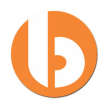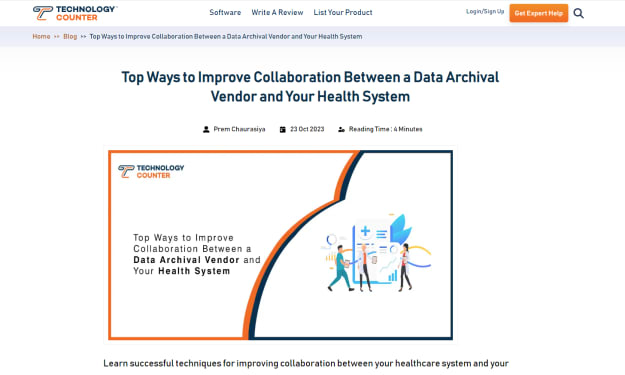
Only the best frontend framework will help you turn your users into prospects and devoted clients because the frontend of your solution is a valuable captive for your users. You require a prospective javascript framework that improves your frontend to increase business productivity.
Limited functionality and operability shouldn't be sacrificed in favor of a simple user interface or the other way around. That's when the worries start to surface. Business owners devote much energy to choosing the best web app frameworks to remain competitive. The critical factors in evaluating the top frontend framework for 2023 are listed below.
- Popularity
- Usability
- Future Support
- Flexibility
- Core Features
- Ease of Integration
- Support for Mobile Development
Most Widely Used Frontend Libraries and Frameworks
I've compiled the front end libraries and frameworks that will be in high demand in 2023, taking into account factors like user awareness, company size, general contentment, interest, usability, and more.
1. ReactJS
React, created by Facebook in 2013, has grown to be the most well-liked JS framework for creating interactive user interfaces. React maintains copies of the actual DOM and updates the virtual DOM to reflect all user edits without affecting the old data. The React.js framework, which boasts a sizable user base of over 3 million, is the best front-end framework according to many business owners.
Benefits of Reactjs:
- Smooth and consistent performance
- Components' ability to be reused
- Effortless Teamwork
- Easy learning curve
- Modern development instruments
2. Preact
Preact is a substitute for React, making it one of the most lightweight and quick-rendering virtual DOM libraries. Preact is used by organizations and is supported by most browsers. High productivity, embeddability, portability, compatibility, and performance are only a few of this library's beautiful qualities.
Benefits of Preact.js
- High efficiency because it is compact
- Link State Module is on offer
- Includes Preact CLI
3. Polymer
With the help of the open-source JS package Polymer, programmers can make their unique HTML elements scalable, maintainable, and stand alone as a full-fledged web app. It was created by GitHub contributors and Google developers. Frontend developers can make responsive designs with the help of a capability provided by Polymer for app layout.
Benefits of Polymer.js:
- Everything is stored in Polymer's parts, and the extra script is removed.
- Offers better Design and Web Components.
- It is designer-friendly and uses concepts.
4. jQuery:
My top 5 front-end frameworks list includes a front-end framework from the past, released in 2006. It indeed has a sizable network for assistance and support of any kind. A library called jQuery manipulates the DOM and CSS to achieve specific functionality.
Benefits of jQuery:
- DOM that is adaptable for adding or removing elements
- Simple HTTP request transmission
- Facilitating dynamic content
5. D3.js
Another well-known JS framework is provided for developers to use and document using the accessible data. In 2011, the BSD license for D3.js was announced.
Benefits of D3.js
- Provides several different visualization collections.
- Adding and customizing current visualization collections, as well as extended capabilities, is easy and convenient.
- It takes some time to get the hang of it, but with a few minor additions, you may eventually apply it to similar problems.
6. Angular
In 2016, Google released Angular, which is built on the typescript. You can handle both your front-end and back-end development with AngularJS.
This framework has a command line interface and a graphical user interface, making it simple for beginners to learn. It includes best practices for integration, dependency injection, end-to-end tooling, and templates.
Benefits of Angular:
- Updates to design and display relationships
- Two-way binding built-in
- Removing oneself from outside influences
- Simple dependency injection handling of components
- Enormous community support
7. Bootstrap.js
Bootstrap is a mobile and agile responsive framework for websites using it. The most well-liked toolkit for the development of apps is an interactive one. It was introduced in 2011 and provided developers with great flexibility when changing various features to meet the client's needs.
Benefits of Bootstrap.js
- The grid system responds quickly.
- Powered by robust JS plugins
8. Vue.js
Even you acknowledged that Vue.js had grown significantly in popularity over the past six years since its introduction in 2014 due to its features. Vue.js is a robust JS framework that lets you create fantastic web interfaces.
For creating more compact front-end elements or even a whole single-page app, web designers utilize Vue.js. Vue.js is adaptable enough to integrate with many libraries.
Benefits of Vue.js
- Extensive documentation that is simple and clear
- assistance with Typescript
- The syntax is simple to learn
9. Ember js
A contemporary component based frontend framework is Ember.js. Ember offers a productive architecture and supports both mobile and online development. It could be challenging for beginners to learn.
Benefits of Ember.js:
- Good organization
- Two-way data binding is available
- One of the front-end frameworks with the fastest performance
- Properly documented
10. Nextjs
A server-side rendering solution for React apps is offered by the web development framework Next Js. With automatic status optimization, developers may design hybrid apps with statically generated pages and server-side rendering.
Benefits of Next.js
- Excellent for SEO; lightning-fast creation of static websites
- Look dynamic
- Decreases time to market
- Adaptable UI/UX
- Strong community backing
Conclusion
This list of the best frontend frameworks and libraries for use in 2023 is my preference. A novice level of expertise is also easily achievable with almost all frontend frameworks. You should speak with the most experienced frontend developers who can help you get started before selecting the best frontend framework.
About the Creator
Bacancy
A Leader in Agile and Lean Software Development






Comments
There are no comments for this story
Be the first to respond and start the conversation.